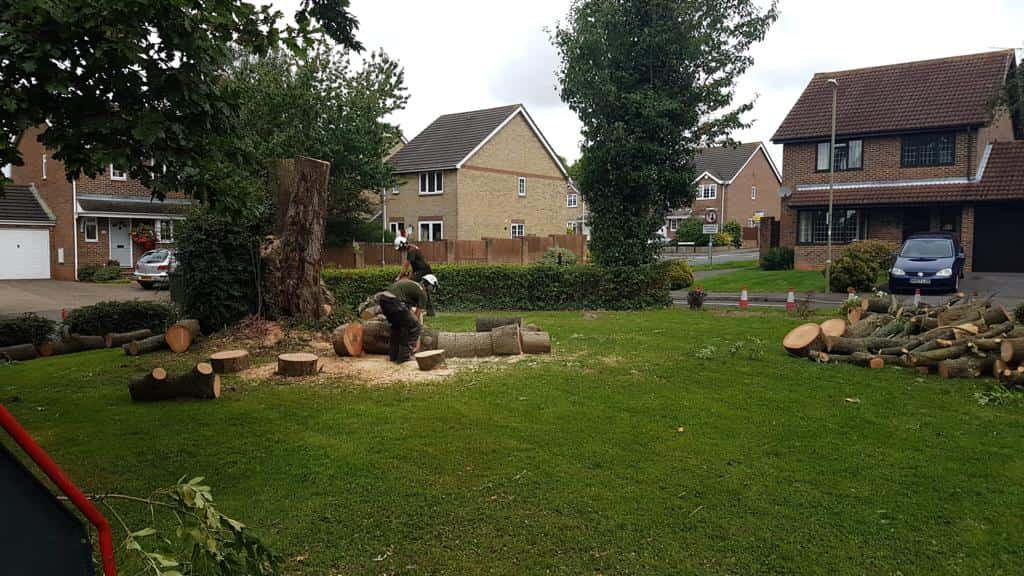Trees are essential components of your landscape, providing shade, beauty, and environmental benefits. However, like any living organism, trees can face problems that need expert attention. In Nailsea, Bristol, EM Tree Surgery provides professional tree care services to address a wide range of common tree issues. In this blog post, we’ll discuss some of the most common tree problems that require expert tree surgery and how our team can help you maintain the health and safety of your trees.
1. Tree Diseases and Fungal Infections
Trees, like any plants, are susceptible to various diseases and infections caused by fungi, bacteria, or viruses. Some common tree diseases include powdery mildew, root rot, and canker. These issues can lead to the weakening of the tree and, in severe cases, result in death.
Fungal infections are particularly concerning as they can spread quickly and compromise the structural integrity of your tree. Symptoms often include discolouration of leaves, abnormal growths, and the appearance of mould or fungal bodies on the trunk or branches.
Expert tree surgery can help diagnose the problem and provide effective treatments such as pruning infected branches or applying fungicides. In some cases, the removal of the tree may be necessary to prevent the spread of the disease to other nearby trees.
2. Pests and Infestations
Pests are another common problem for trees in both urban and rural areas. Insects such as aphids, caterpillars, and beetles can cause damage by feeding on the leaves, bark, and roots of the tree. Infestations can weaken the tree, reduce its ability to photosynthesise, and leave it vulnerable to other diseases.
An experienced tree surgeon will assess the severity of the pest problem and recommend the best course of action. This may include the removal of infested branches, the application of pest control treatments, or in extreme cases, tree removal to prevent further damage to your property or neighbouring trees.
3. Overgrown Trees and Poor Tree Shape
Overgrown trees can become problematic for several reasons. They may obstruct pathways, overhang roofs, or interfere with power lines, creating a safety hazard. Additionally, poor tree shape or an imbalanced canopy can make the tree more vulnerable to wind damage, leading to broken branches or the potential for the entire tree to fall.
Crown reduction, crown thinning, and crown lifting are tree surgery techniques that can be used to manage overgrown trees. These services not only improve the tree’s shape and appearance but also reduce the risk of damage during storms. A professional tree surgeon will know the right approach to safely prune and shape your tree without compromising its health.
4. Tree Roots and Root Damage
Tree root problems are common, especially for trees that are growing close to buildings, paths, or other structures. Over time, roots may grow too close to foundations, leading to cracks and structural damage. Tree roots can also lift paving slabs, damage pipes, or invade the soil of nearby plants, competing for nutrients and water.
Root pruning and root management are key services that tree surgeons offer to protect your property while ensuring the health of the tree. Careful removal of problematic roots can prevent further damage and promote better root growth. In some cases, it may be necessary to consider removing the tree if the roots are causing significant damage to your home or garden.
5. Storm Damage and Broken Branches
Strong winds and storms can cause significant damage to trees, especially older or weakened specimens. Broken branches can be hazardous, as they may fall unexpectedly, posing a danger to people, vehicles, or property. Storm damage is particularly common during the autumn and winter months when trees are more exposed to high winds and heavy rainfall.
A professional tree surgeon can safely remove broken branches and assess the tree’s structural integrity. If the tree has sustained severe damage, they can help you determine whether the tree can be salvaged or if it needs to be removed for safety reasons.
6. Tree Leaning or Instability
Trees that lean excessively or appear unstable are at risk of falling. This can be caused by various factors, including poor soil conditions, root damage, or simply the tree’s age. A leaning tree can pose a significant risk to your home, garden, or surrounding areas.
Expert tree surgery can include stabilising the tree through methods such as bracing or cabling, which helps to redistribute the weight and prevent further leaning. If the tree is beyond saving, professional tree removal services may be required to avoid potential hazards.
Conclusion
Maintaining the health of your trees is vital for both the safety and beauty of your property. Trees face a range of potential problems, from diseases and pests to structural issues and storm damage. Recognising the signs of tree problems early and seeking expert tree surgery can help address these concerns before they become serious.
At EM Tree Surgery Nailsea, we offer comprehensive tree care services to keep your trees healthy, safe, and looking their best. Whether you need disease treatment, pest control, crown reduction, or tree removal, our team of experienced tree surgeons is here to provide expert solutions tailored to your needs.
If you notice any of the common tree problems discussed in this article, don’t hesitate to contact us today. We’ll help you protect your property and maintain the health of your trees for years to come.
Call us on: 01275 402 923
Click here to find out more about EM Tree Surgery Nailsea
Click here to complete our contact form and see how we can help with your trees needs.

